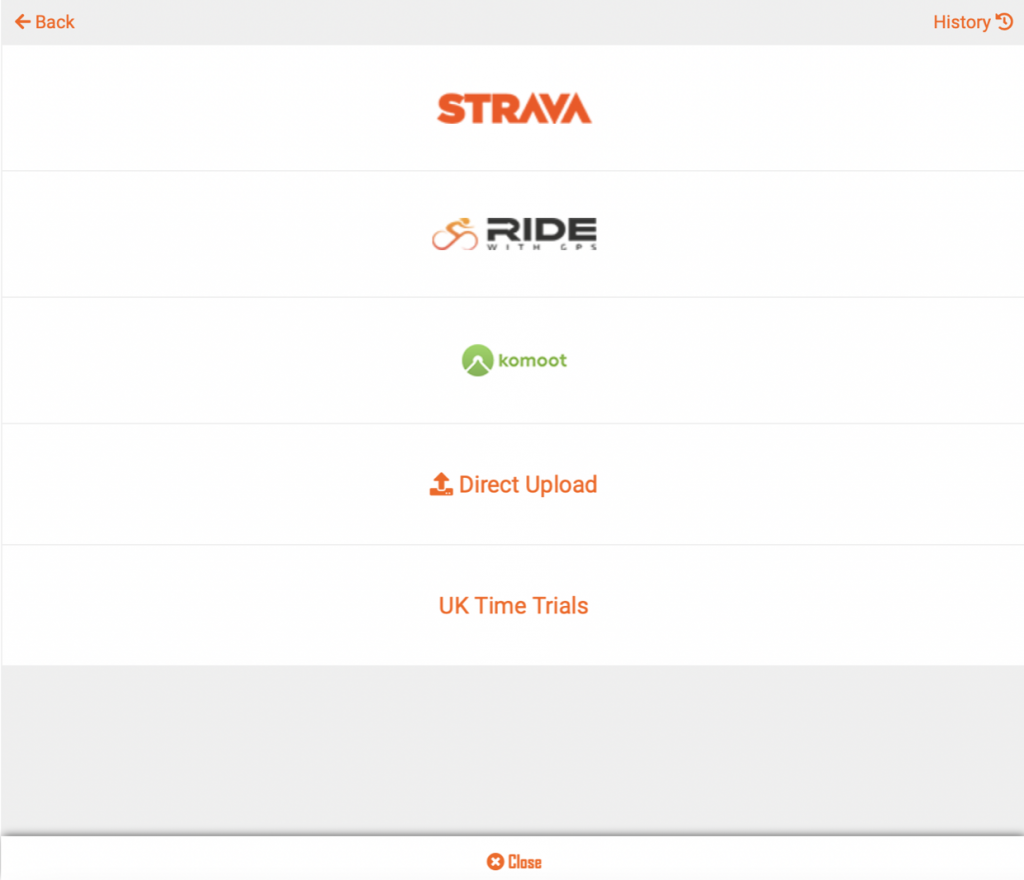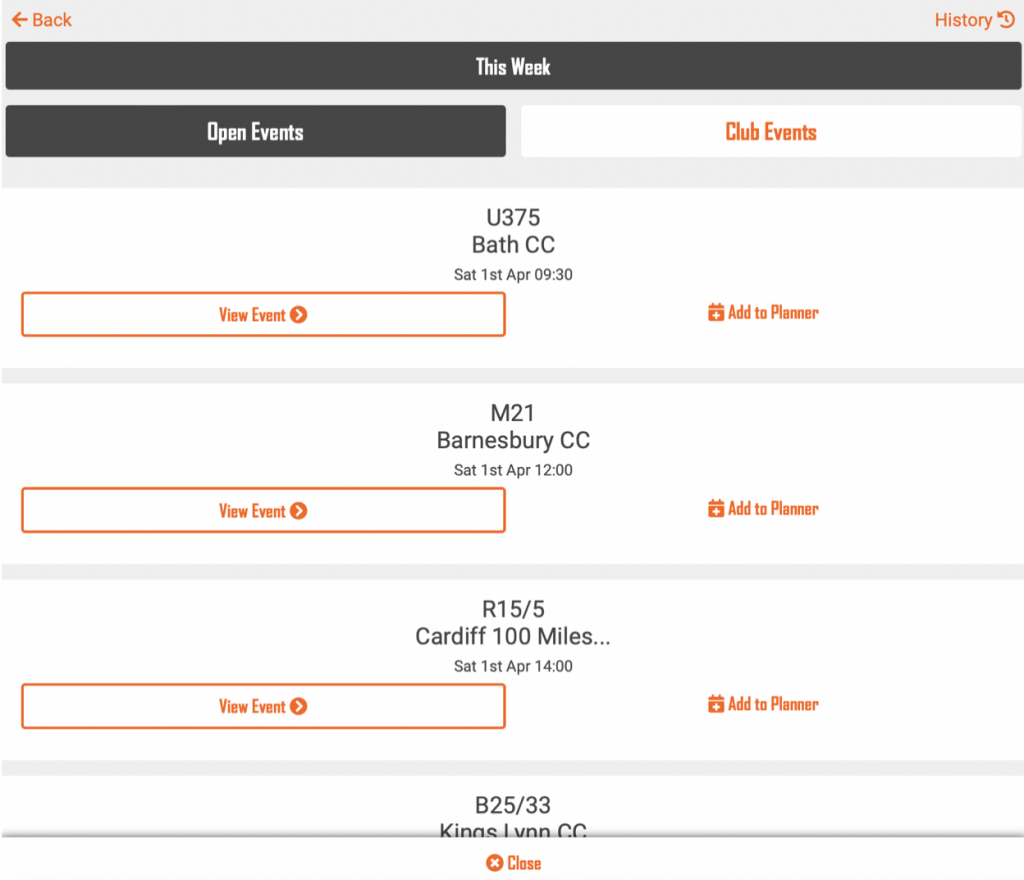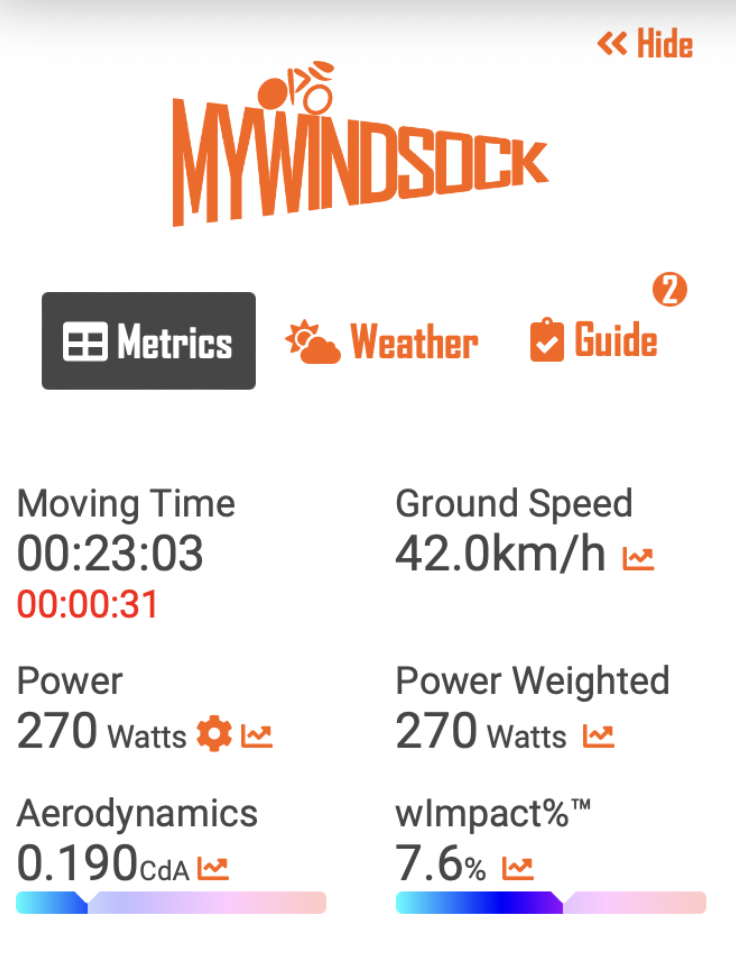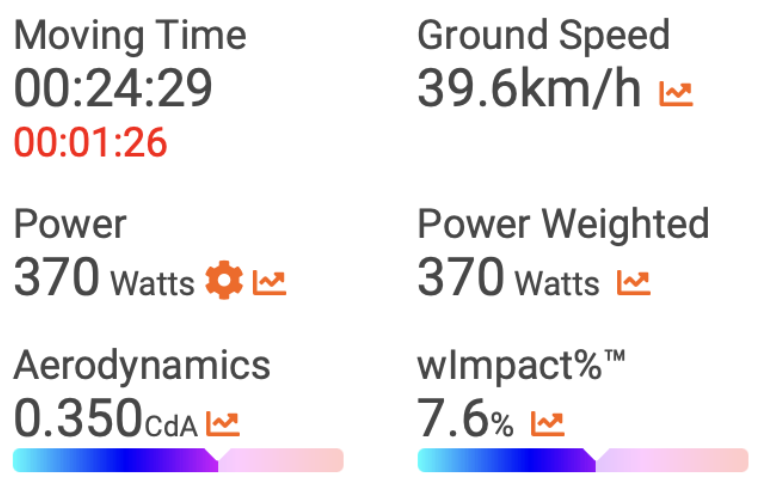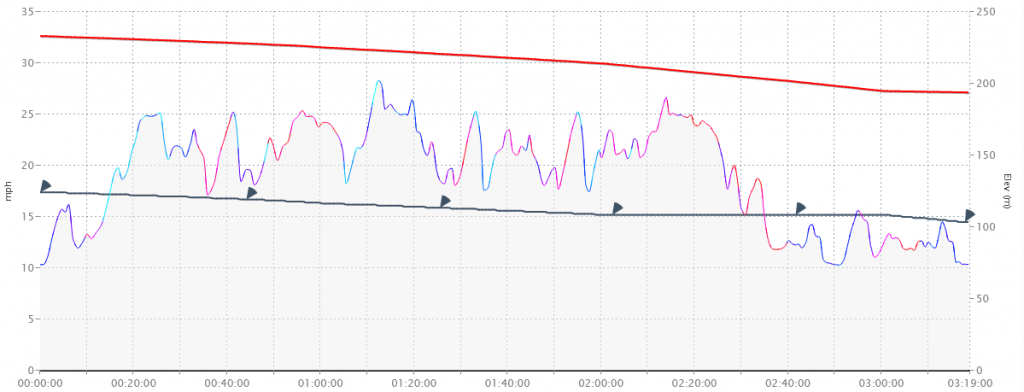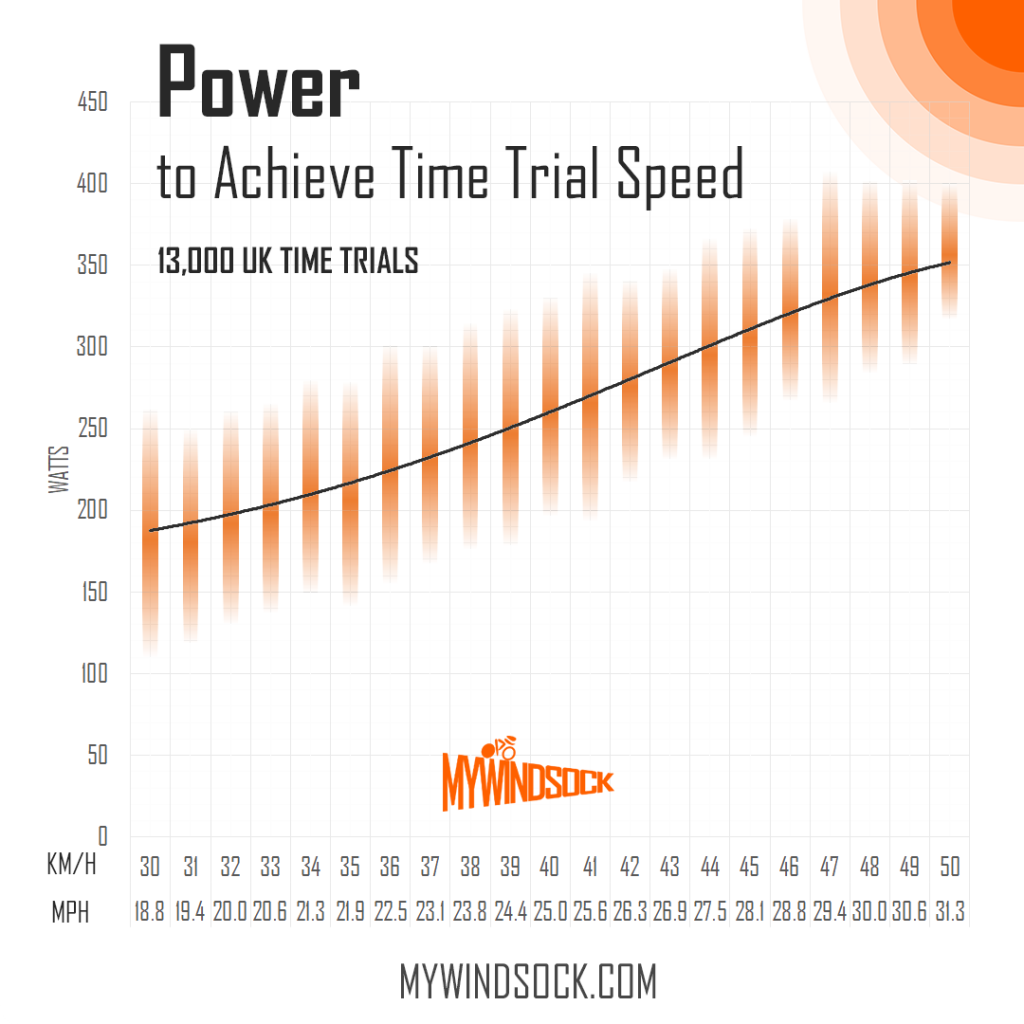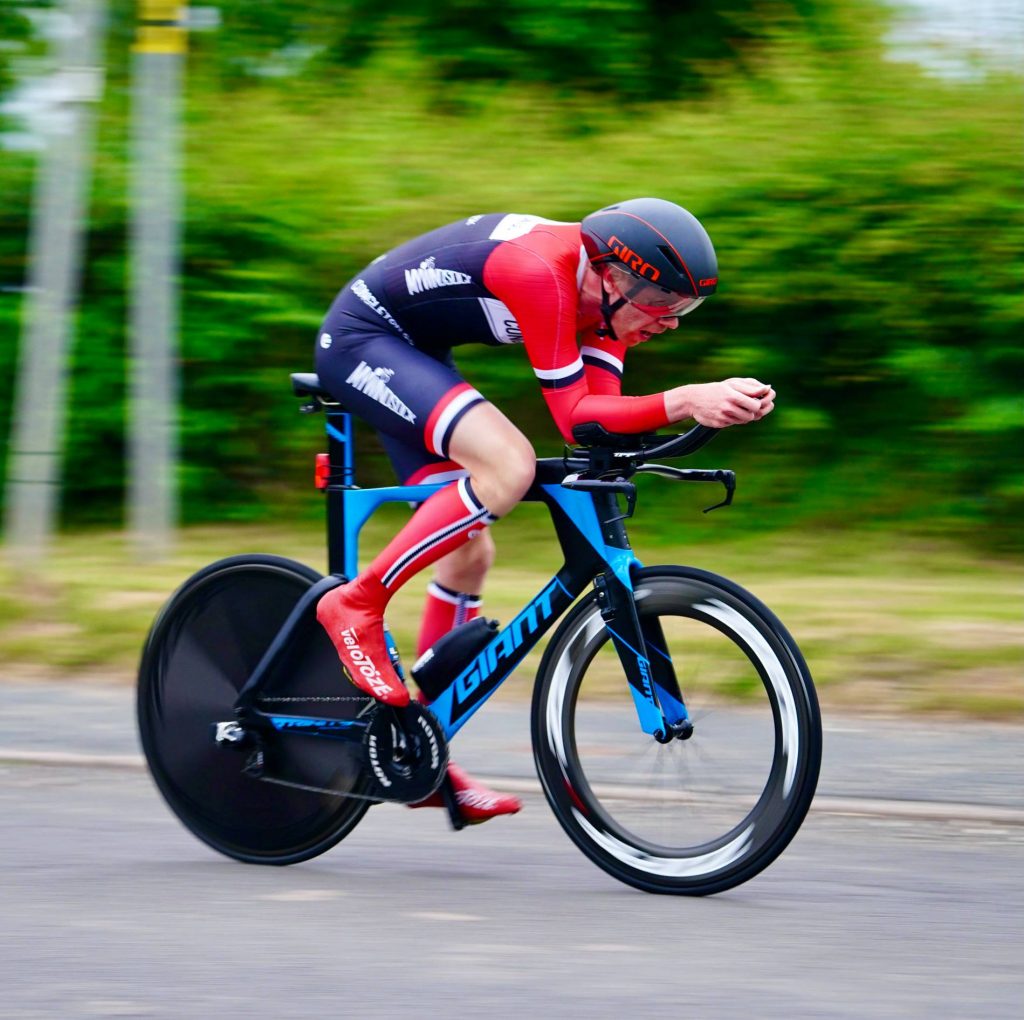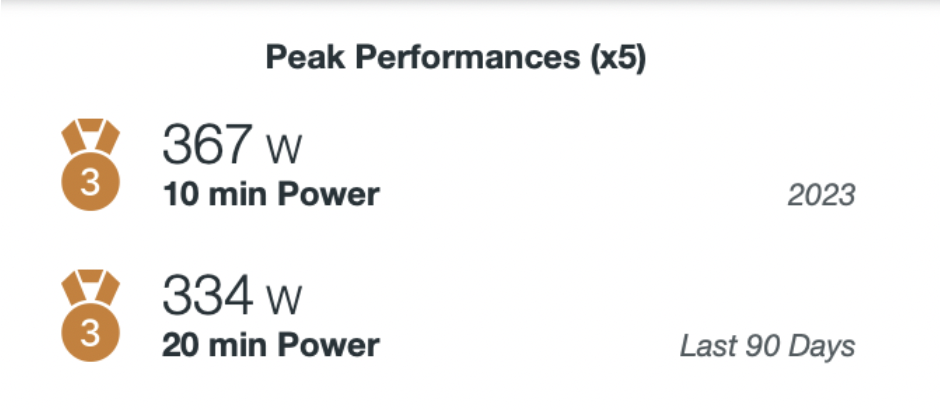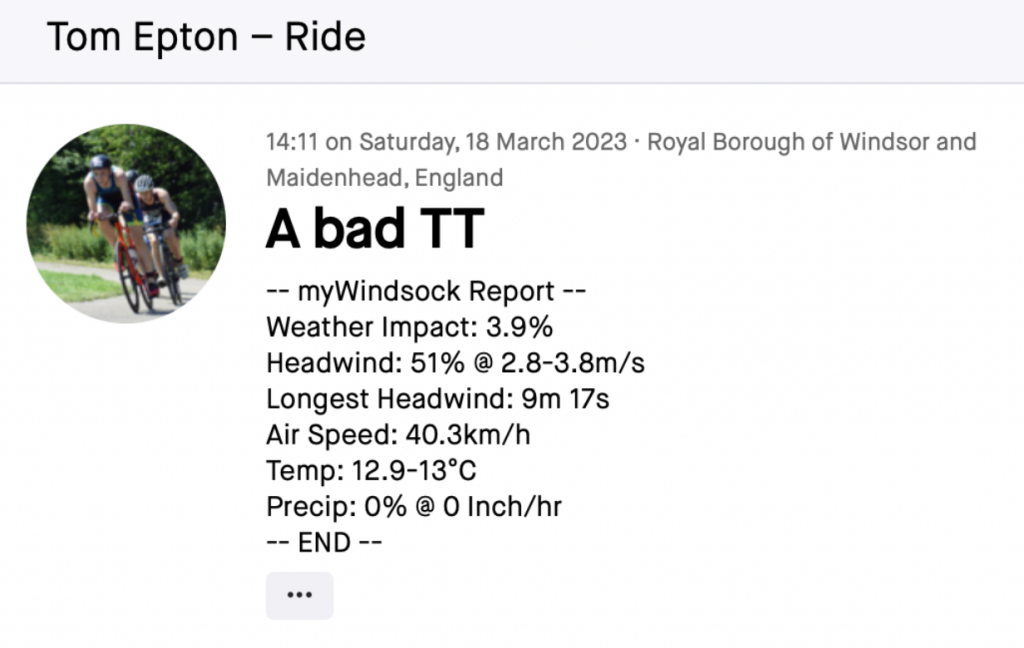Everyone knows that aerodynamics are extremely important for cyclists – even more so for cyclists concerned with their speed. myWindsock have analysed thousands of files from time trials in the UK and looked into the distribution of CdA values and what speeds result from this.
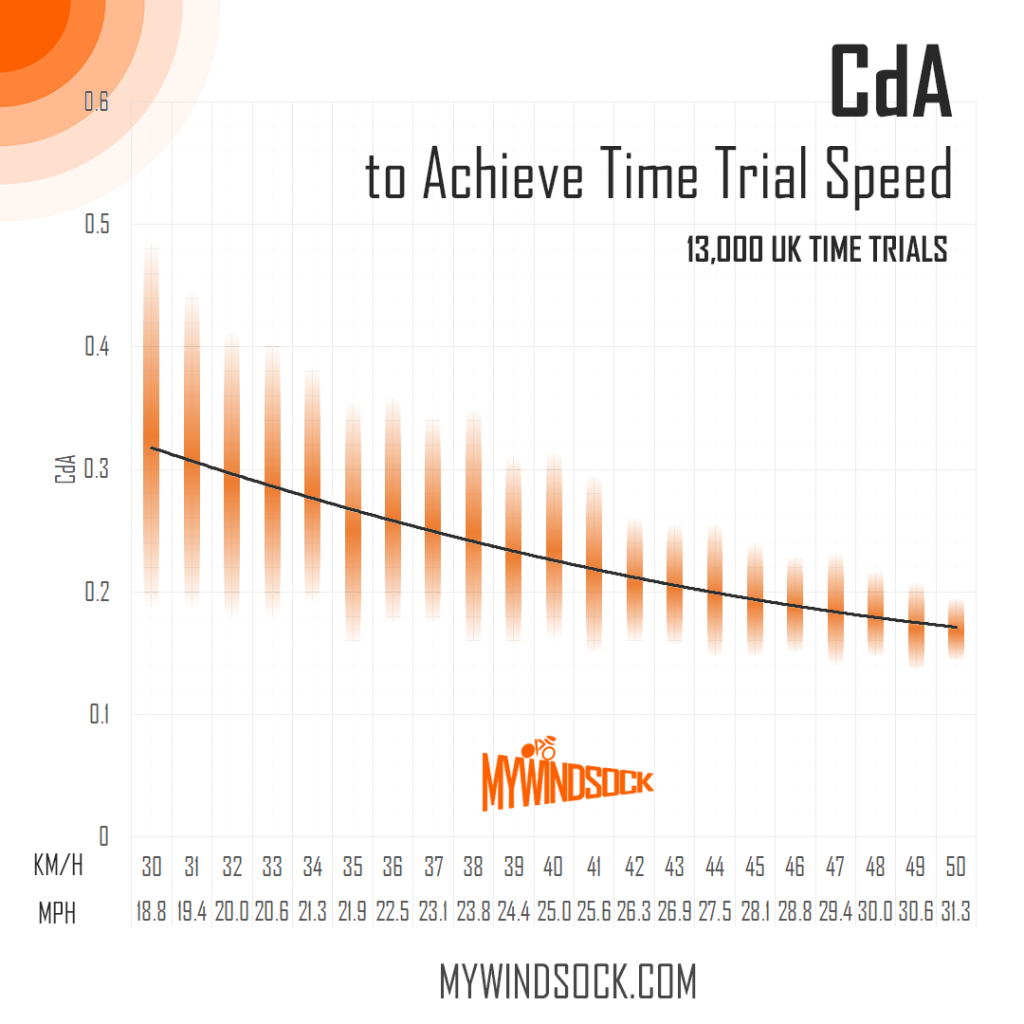
Why is cda important for cyclists?
The term ‘cda’ actually stands for two things, how slippery you are (cd) and your frontal area (a) – CdA is the product of these values. It is used by engineers as one term because practically, it’s often difficult to separate the effect of the two with measurements. Generally speaking, CdA is a measure of how aero you are.
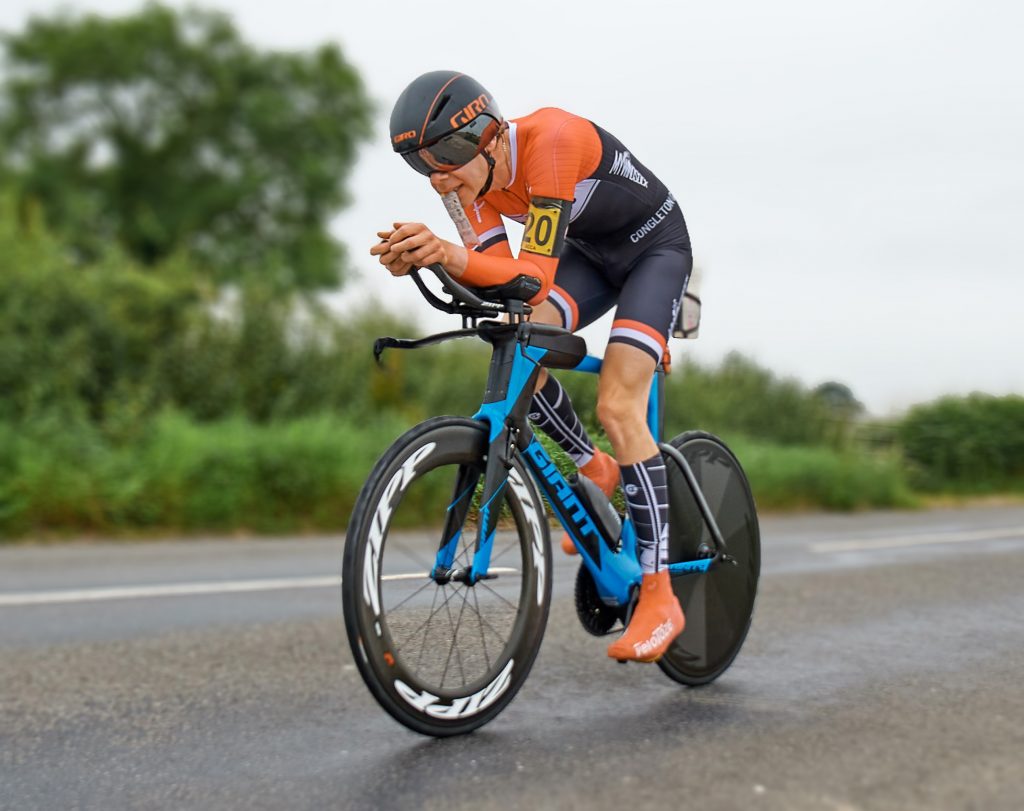
Why are aerodynamics important for cyclists?
Aerodynamics play a crucial role in the sport of cycling, as they can significantly impact a cyclist’s performance and speed. When a cyclist rides, they face resistance from the air around them, on a flat road this takes up roughly 80% of total resistance. The faster a rider travels, the greater the air resistance they experience. By optimising their aerodynamics, a cyclist can reduce the drag they face and improve their speed and efficiency. This can be achieved through various means, such as selecting the right gear, maintaining a good position and using aerodynamic wheels, helmets and skinsuits. Even small gains in aerodynamic efficiency can make a significant difference in their overall performance and race results.
myWindsock allows you to analyse your aerodynamics, with a number of CdA measuring features available calculated with a combination of your power data and the weather where you’re riding.
myWindsock premium features
myWindsock premium will measure your CdA on every ride! For around two pounds a month you will get…
- Unlimited Athlete Profiles
- Unlimited Uploads
- Design Optimum Power Plans
- Aerodynamic Analysis & Testing**
- Advanced Charts & Analysis
- Weather Trends
- Unlimited Virtual Athlete Profiles
- 15 Strava Segment Windsocks
- Unlimited Daily Activity Uploads (fair use)
- Strava Segment Filtering
- Strava Leaderboard Effort Weather*
- Advance Cycling Weather Metrics
- Download Virtual Partner
- Annotate the race or training plan with Course Notes
This huge array of features will cost you $2.50 (£2) a month – sign up here.




 UK Time Trial Events
UK Time Trial Events